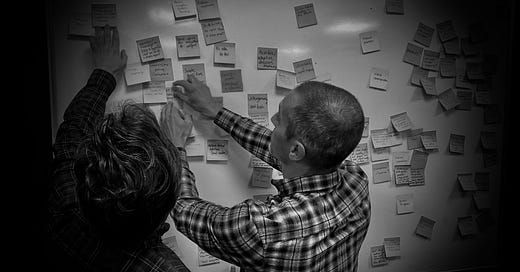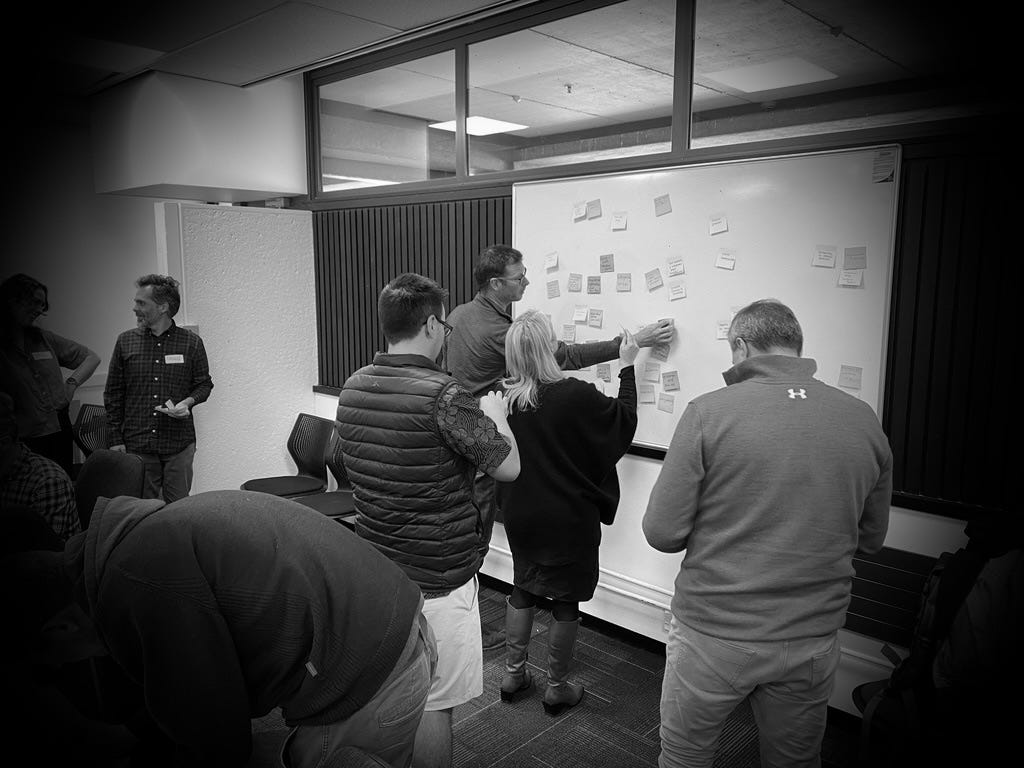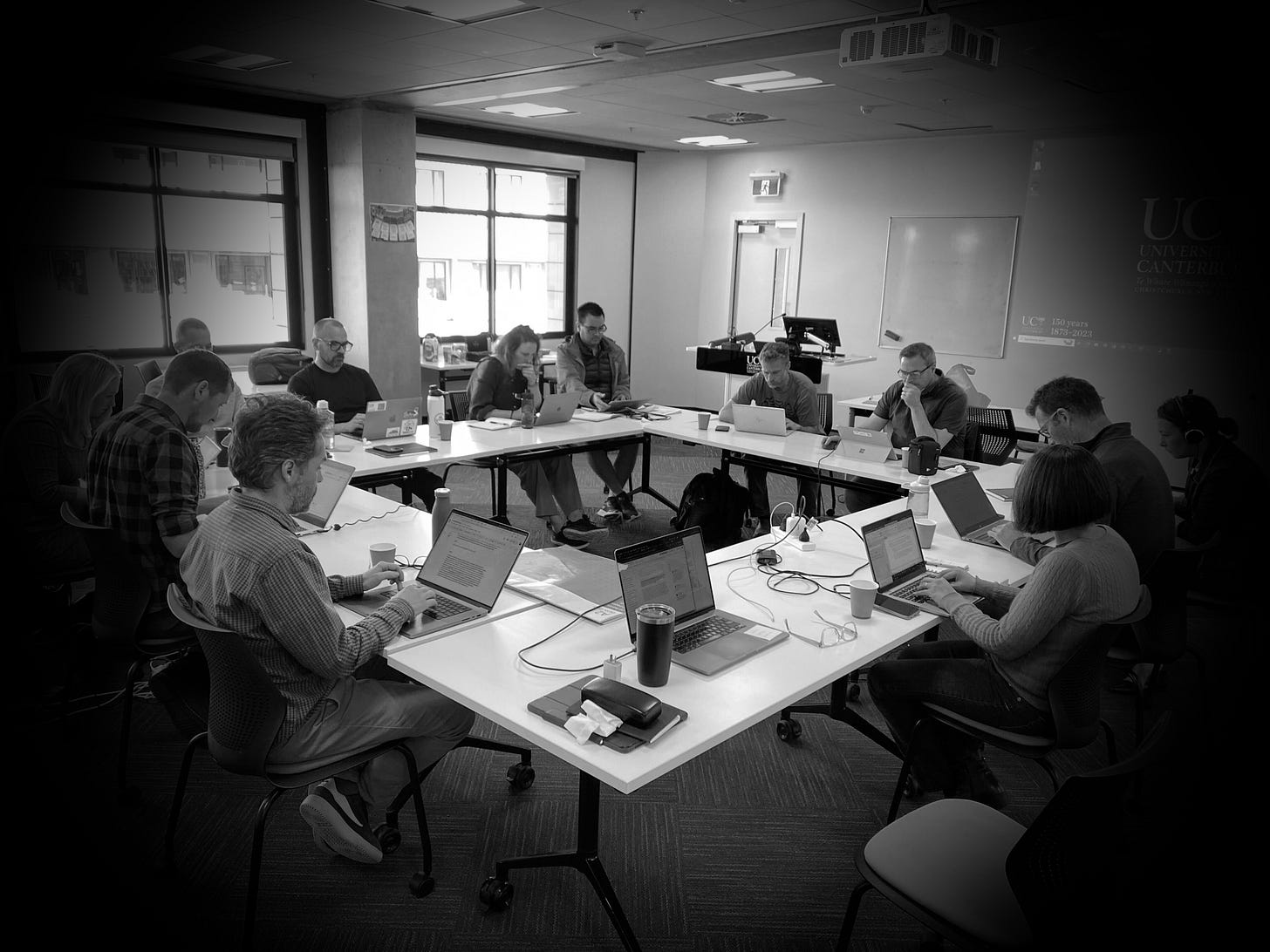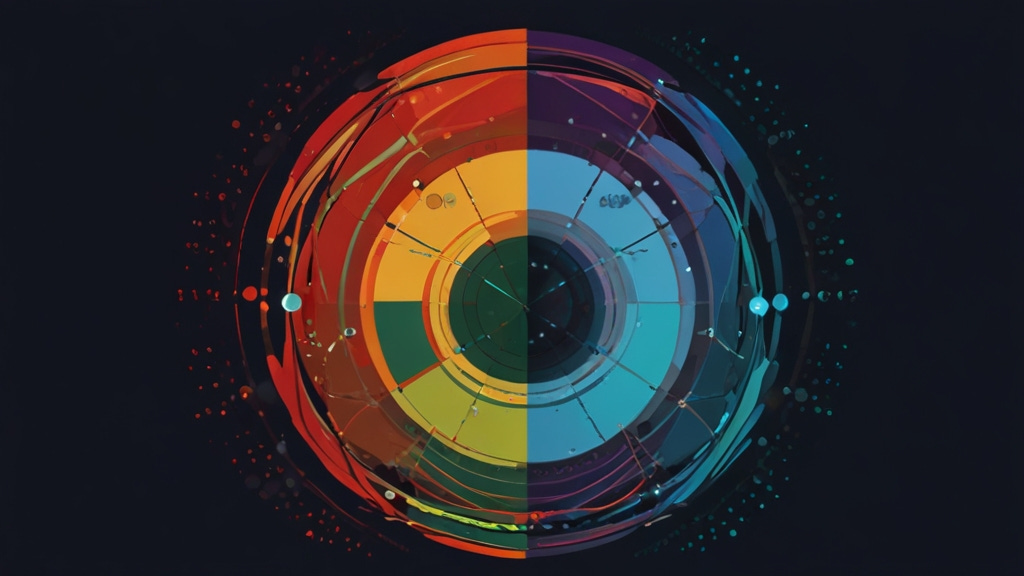Breaking down silos: reflections on facilitating an interdisciplinary workshop
Some reflections from a recent workshop I hosted.

We are deep in the climate crisis.
Not only are we well past the climate planetary boundary, we have also crossed five more of the nine planetary boundaries. These represent the boundaries within which humanity can continue to develop and thrive for generations to come, and we've crossed them.
Let that sink in: The Earth is now well outside of the safe operating space for humanity.
And for the climate in particular, indications show that even if we successfully phase out fossil fuels, we would still surpass the 1.5 degree Celsius threshold unless we also restore the biosphere boundaries to safe levels.
The accelerations we're seeing in temperature are alarming. They're not only continuing to rise, but they're accelerating. Yet, little seems to be working to shift this slow moving beast. What good that is happening is happening too slowly.
Science is clearly not enough as the message clearly isn't getting through.
So, I continue to look for ways to make as big an impact with my time as possible. And for that, I need to do more than just science for science's sake.
And when I think about disciplines that have the power to leverage positive change in spaces like climate change and biodiversity loss, I think of things like social science and economics. So, short of retraining, the most effective pathway to impact is to work alongside experts in these fields in crossdisciplinary ways.
Note: A couple of months ago, I wrote a post on the various forms of disciplinarity in science (from intradisciplinarity to transdisciplinarity). To get a handle on these, please go check that out as it does provide some context for this post, even just for the summary.
Last week, I did just that: I ran a workshop with a diverse team of people focused on solving major challenges1. I won't disclose the details of the workshop here as there will be a couple of papers emerging from this work over the coming year. We had ecologists, geomorphologists, indigenous knowledge experts, lawyers, policy specialists, social scientists, governance experts, economists, and infectious disease experts. I’ve run workshops before and I’ve facilitated a lot of discussions with other ecologists and postgraduate students but this is the first time I’ve run anything so explicitly crossdisciplinary. In fact, the goal of the workshop was to find interdisciplinary solutions.
There are a lot of organisations that are keen to make positive change in this space. Explicitly interdisciplinary or transdisciplinary research (again check this post for definitions) is a fantastic way to find real, meaningful solutions to both grand challenges and more localised everyday issues. Continuing to silo ourselves will only go so far when humans are involved.
So, I thought I'd share some lessons on running such a workshop. These are things I knew going in, but many were solidified through the process. There should be something in this for everyone, including those actively working in this space. Hopefully, though, it'll be interesting for those outside this space to see under the hood of how academics and researchers work in producing collaborative research.
So, here we go...
Lessons on interdisciplinarity
Consensus is hard
If interdisciplinarity was easy, we'd all be doing it. It's hard. But it's also super fun. If you have people from fifteen different disciplines in a room, of course it's going to be challenging to reach consensus. For instance, resilience is a term we use a lot in ecology, which to us ecologists has multiple definitions but is typically considered something along the lines of the ability of a system to resist, recover from, or reorganise in the face of disturbances. Some like to think of resilience being the sum of resistance and recovery, others like to think of resistance and resilience as separate things. And that's just within ecology. Try getting social scientists, economists and the like agreeing on a definition.
This isn't a problem. In fact, it's the exciting part. This is where the magic happens. But you have to make space for this in such workshops. That leads me to the next point.
Making space for buy-in is key
I came in with a clear idea of what I wanted. But others came in with only limited pre-workshop information, other than what I sent them. So, it's important to make space for those involved to buy into the idea. Build buffer time into the workshop and allow fruitful, wide-ranging discussions to take place to help ensure people are bought into the idea. This gives them ownership in the problem, rather than simply helping to solve your problem.
Mixing activities helps find important connections
Different people work in different ways. It’s important to account for this to get the best out of the minds in the room. But it’s also important to use different approaches to help find new connections among ideas.
This is possible by incorporating a diversity of activities such as sticky note focused brainstorming lightning sessions, but also group discussions and even icebreaker activities (which can be super fun and are helpful in getting people comfortable with sharing ideas).
Brainstorming approaches are a critical tool when looking for interdisciplinary solutions. There are lots of them, so don’t be afraid to use a variety. This is a way, particularly with ‘rapid ideation brainstorming’, to get as many stream-of-consciousness thoughts down on paper as quickly as possible. And these don't need to be good ideas. The key here is volume. So it's best to do this before any discussion. Brainstorming needs to be about getting as many thoughts down as possible and it is absolutely crucial there is no critique. This allows for more creativity.
Writing sessions can come later. First, comes the fun part of connecting the dots between diverse ideas. Then, once ideas are combined, people have bought in, and wide ranging discussions are had, then the writing can begin.
There are lots of ways you can try to target interdisciplinarity via such writing sessions. For our workshop, I ran a series of 30-minute writing sessions where folks were coming with their disciplinary blinders on and writing their ideas that had been developing throughout the workshop, followed by trying to build on and embed ideas within previous disciplinary perspectives.
Outcomes are more actionable
The whole point of interdisciplinarity is to leverage the power of different approaches to gain the most traction. An ecologist's solution to a problem only has so much sway. But the amalgamation of ideas between an ecologist, a social scientist, a policy specialist, a geographer, and an economist is likely to be more actionable. Ecological problems are best treated as social-ecological problems.
But, to make outcomes actionable, you need the right team…
Team is critical, including diversity
Our workshop was a success, because we had the right people in the room. Diversity of viewpoints is key, but you need to make sure people in the room are receptive to these ideas. As I learned, choosing wisely can lead to an experience that can be enjoyed by all.
Some specifics for those running workshops
You owe it to the attendees to make it work
Academics and researchers are extremely busy. We have an inordinate amount of things to do. If you invite 15 people to a workshop, you owe it to them to make it worth their while. You also owe it to the taxpayer as a lot of our funding comes from them. This means...
The workshop is the easy part
To make a workshop run smoothly, you need to put in the hard work beforehand. I spent a lot of time thinking deeply and reading up on the topic we worked on. In fact, I had a draft outline of a paper already written down as a backup to come back to if things didn't go so smoothly. And I spent a lot of time coming up with a large list of potential activities. I kept it flexible in terms of which ones we used depending on the direction things were going. This helps. But it requires a lot of work up front to have a list of approaches on hand. Balancing the amount of work you ask of your participants before the workshop is important too. Giving opportunities to up-skill on the topic is useful, but not to the point it is off-putting. For this workshop, I wanted people to come in with their disciplinary blinders on as much as possible. The interdisciplinary connections were sought between people, not within.
You can achieve a lot
If you've organised things well, you can achieve a lot in a short space of time. We only spent a short period of time writing in our workshop, but there is enough content for two papers to come out of it (and weeks of editing).
Be firm but flexible
Just like being a parent, it's important to have hard guardrails up, but let these be wide. Without guardrails, discussions can go all over the place and nothing ever gets done. But having wide guardrails and lots of freedom within them allows for interesting directions to be taken and for the team to have ownership in the outcome. However, leadership is key here. It’s helpful to know where these are and keep the end goal in mind.
Be a taskmaster
I've been in workshops before that went nowhere. This is fine, but often is a result of too much flexibility and not enough direction. While challenging at the time, folks appreciate a hard taskmaster because it helps get things done. Investing precious time in a workshop and getting nowhere can be frustrating. But getting a good outcome because the leader drove for clear results is in everyone's best interest. And it's important to realise that getting work done outside of the workshop room is much harder. We are all very busy people. When you have the undivided attention of the group, you need to capitalise on it.
Conclusions
Organising is a workshop is a lot of work and can be stressful if you respect the valuable time of your attendees. Interdisciplinarity always runs the risk of getting nowhere, but with some effort and flexibility, it can be super rewarding. However, the hard part is what follows. Nothing comes from it unless you're willing to turn it into something tangible.
I hope there is something in there that resonates, even if just to see under the hood in how academic workshops work that lead to collaborative papers. Obviously, the proof is in the pudding in terms of our workshop, but it's a work in progress right now. There will be a paper (or two) emerging over the next year or so (peer review takes a long time and we haven't even written the paper yet). Watch this space.
In the meantime, feel free to click the ❤️ button on this post to help more people discover it. Tell me what you think in the comments! And share away with your friends and family if you found it useful.
If you’re joining for the first time, check out the archives. Here are a couple of relevant posts.
To address grand challenges, we need transdisciplinarity, but what actually is it?
Last week, I discussed the need to broaden and diversify research in the search for solutions to grand challenges like biodiversity loss and climate change, including the search for win-win biodiversity-climate solutions. One tool in the toolbox is to use explicitly …
Diversifying research for greater impact
Our greatest strength is the exact opposite of narrow specialization. It is the ability to integrate broadly.
The workshop was funded by Te Pūnaha Matatini, a New Zealand Centre of Research Excellence on Complex Systems administered by the Tertiary Education Commission.









Another great article Jono. It is so encouraging to see a diverse group of people getting together to try and solve the world's climate problems. It is the passion and dedication of such people like yourself that gives me great hope for the planet's future.
I thoroughly enjoyed this article. It is a refreshing, upbeat, and much-needed message of hope in the all-pervading doom and gloom about climate change. We need to step out of our silos. This article needs to be widely shared.